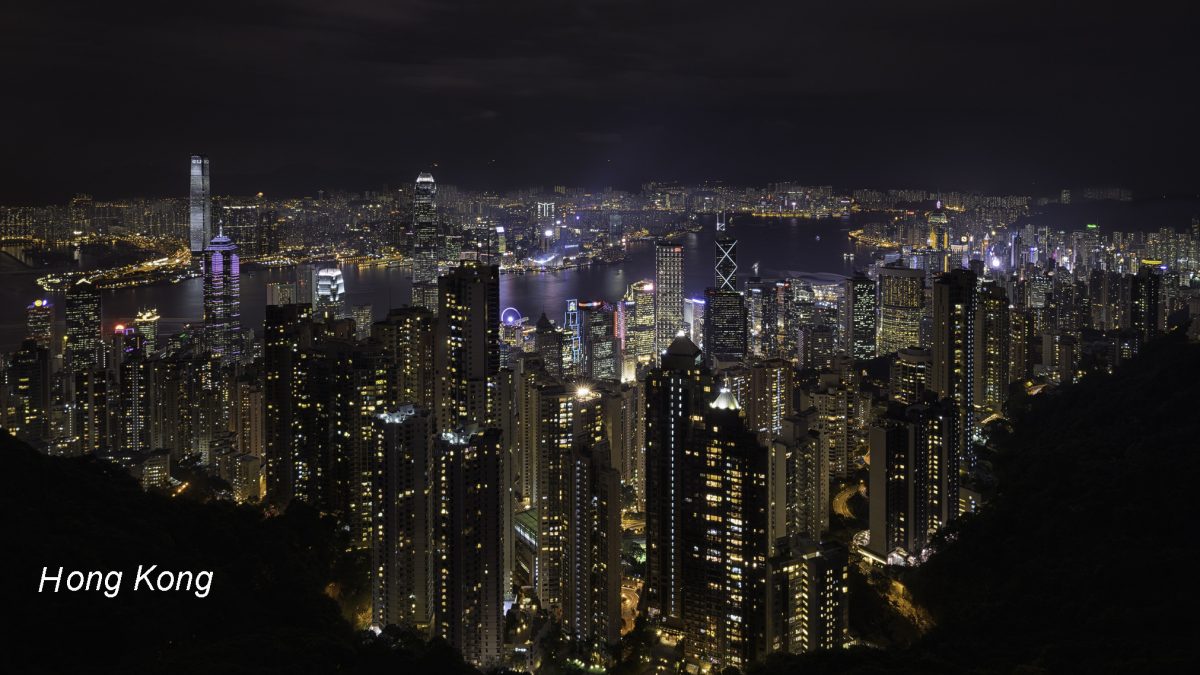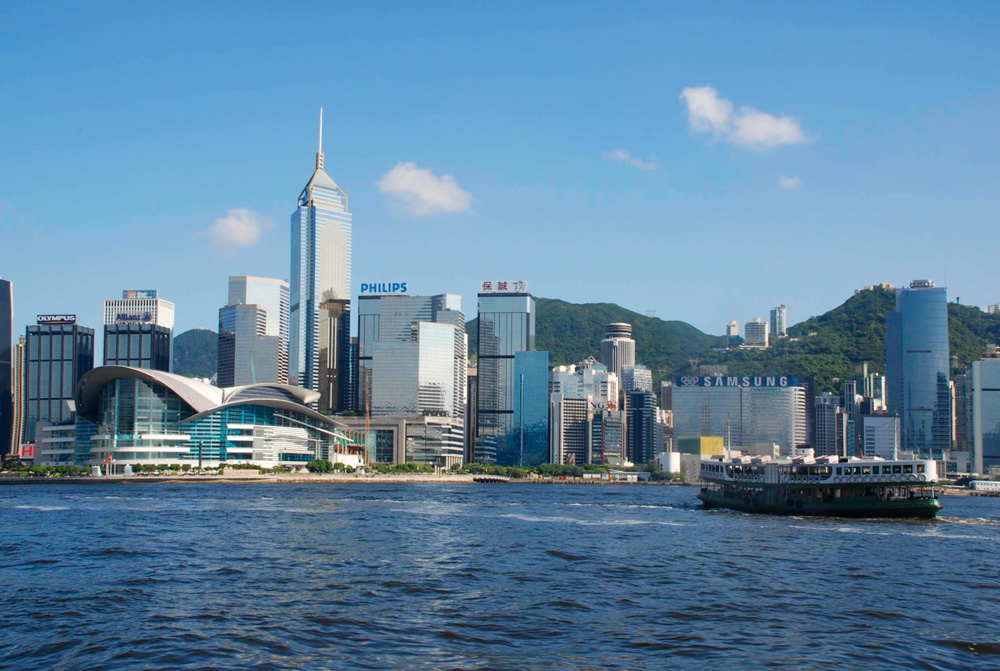10 Things to Do in Hong Kong in 24 Hours
Please note: some of the links may be affiliate links. You don’t pay anything more but we make a small commission if you buy through our link. Thank you!
This post will provide a list of things to do in Hong Kong in 24 hours or if you have limited time. I also share with you some places to eat. At the end of the post, look for an explanation of all the transportation options on how to get around in Hong Kong.
Understanding the Culture of Hong Kong
Before I get into the list of things to do in Hong Kong, I want to suggest you look into the culture of Hong Kong in advance of going. You will enjoy Hong Kong much more if you appreciate the cultural dynamics.
Hong Kong is one of the most unique cities in the world. I never tire of going there because it is so fascinating. Understanding the history and the culture is imperative to enjoying your time there to the full. The culture is a mixture of Cantonese (which is distinct from Han Chinese) and British Colonial.
A pleasant way to pick up the history of this city (or at least a semblance of the history) is to read James Clavel’s two books set in Hong Kong – Tai-Pan and Noble House. While these books are fiction, they are steeped in the history of this British outpost. Another resource is Wikipedia.
Modern Hong Kong was founded by the British after the dreadful opium wars, but it soon became a major trading entity and a financial powerhouse.
Juxtaposition of West & East; Rich and Poor.
What makes it so unique is the juxtaposition of Western and Eastern cultures, extreme wealth and extreme poverty. The wealth of some of the Hong Kong population is almost distasteful against the poverty of some of its inhabitants. Probably what makes the divide between rich and poor so apparent is that they are all crammed into a small area (over 7 million people in 426 sqr. miles). All these people live and work in the world’s largest number of skyscrapers.
Hong Kong Sectors
Hong Kong is made up of 3 regions: Hong Kong Island, Kowloon and the New Territories. In 24 hours, you are likely to visit the Island and Kowloon. Kowloon is part of the mainland and became part of Hong Kong under British rule after the 2nd Opium War. Over time Britain leased more land from China – these were known as the New Territories
1. Victoria Peak
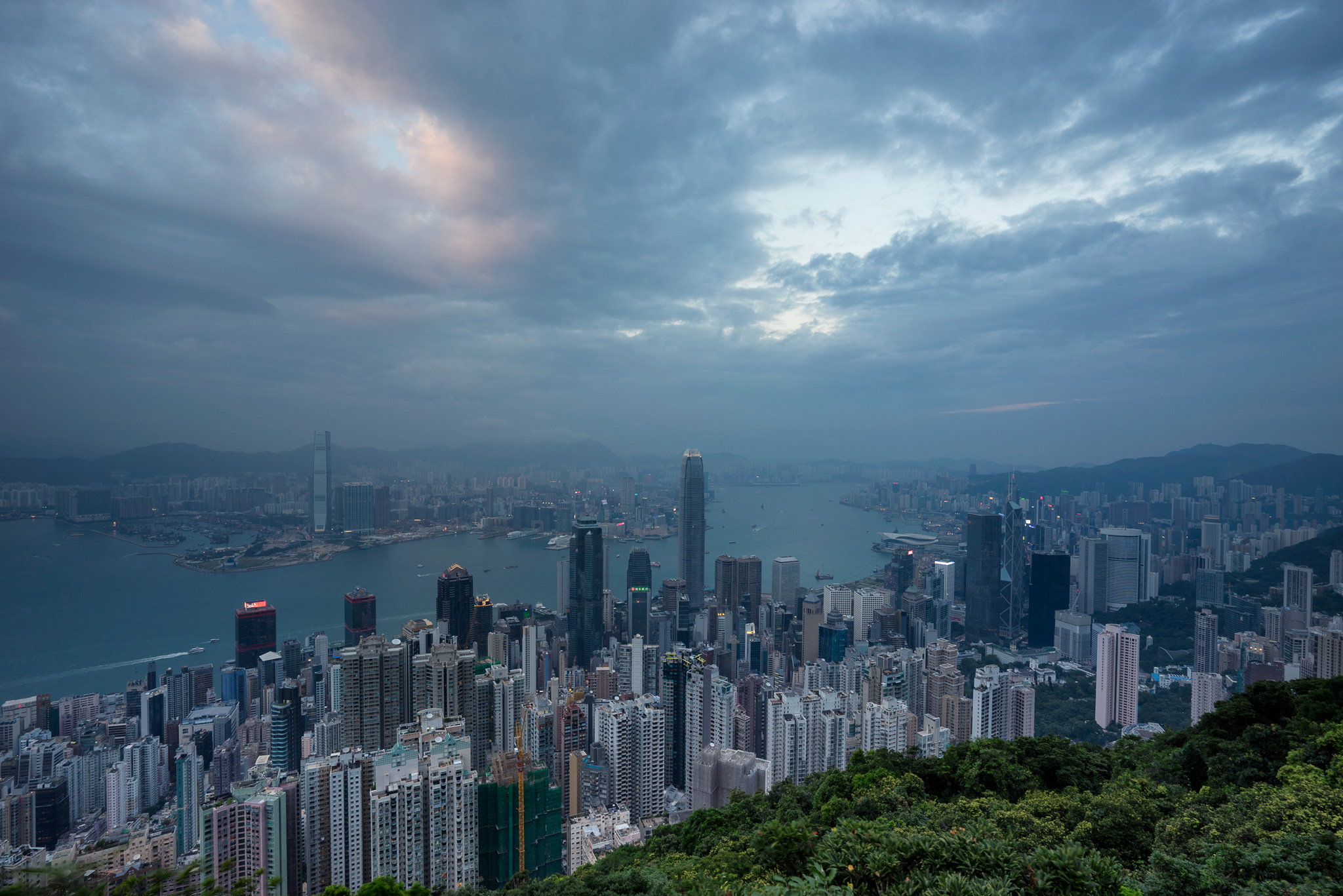
There is no better place to view Hong Kong than from Victoria Peak. From there you get a sense of the density of the skyscrapers.
I think the best time to visit Victoria Peak is at dusk, because you see the view in both daylight, and then as the lights come on, at night. Of course, most of the other tourists feel the same way, so this is the busiest time on the peak.
If you are a photographer and want to get the iconic shot like the one at the top of this post, you need to get up early and stake your claim on a piece of the viewing platform – then be prepared to defend it! Alternatively, you can get similar views (like the one above) by taking one of the walking paths that wrap around the Peak and are, generally, a lot less crowded.
Ways to Get to the Peak
There are at least 3 ways to get to the Peak. The first is the Peak Tram. The lower station is found on Garden Road . There are 2 types of tickets you can purchase at the lower station. One is a ticket purely for the Peak Tram, the other includes the Sky Terrace pass. The Sky Terrace is the viewing platform at the top of the peak. For a few dollars more, it’s worth buying the Sky Terrace pass. The only problem with the Peak Tram is that at “peak” times it is very busy, both going up and down. You can choose to take it up and use a bus or taxi coming down. Check here for the latest prices. You can buy tickets to skip the line here.
A second way to get to the top is by taking bus 15. Note: Don’t take bus 15C.
Bus 15 starts at the public ferry piers at Central, but there are various stops along the way that you can jump on. It takes between 40 mins and an hour to get to the top.
The third way to get there is by taxi (including Uber).
Of course, you can use a combination. Go up using the tram, if you have never been on it before, and come down by bus or taxi.
2. Star Ferry Between Central and Kowloon
The Star Ferry is an institution in Hong Kong, deeply rooted in its history. Started in 1888 by Dorabjee Naorojee Mithaiwala, a Parsee cook, it was originally called the Kowloon Ferry Company. Sir Catchick Paul Chater bought the boats and renamed the ferry to the Star Ferry Company. The ferry plays an integral role in the commuter system of Hong Kong, moving about 20 million passengers a year.
3. Tsim Sha Tsui Promenade
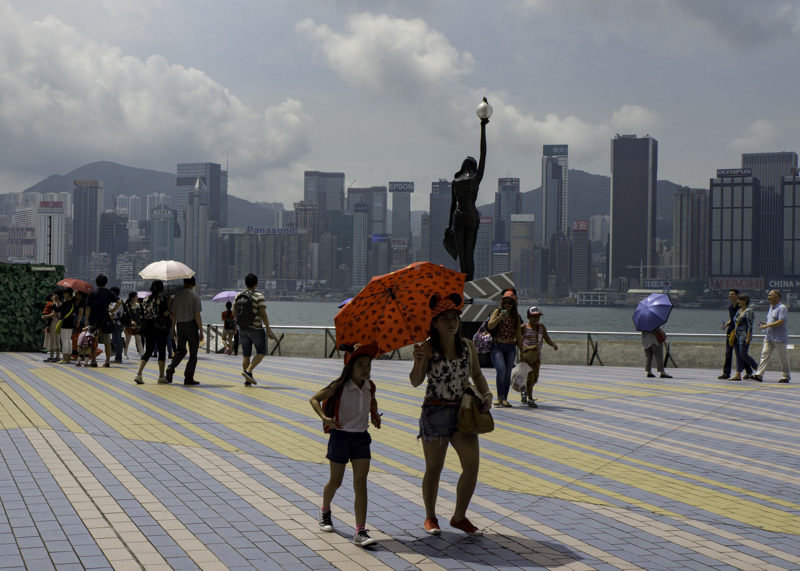
When you de-board the ferry on the Kowloon side you will be deposited onto the beginning of the Tsim Sha Tsui promenade. This famous promenade allows you to personally experience the famous view of the Hong Kong skyline. Included as part of the promenade is the Avenue of Stars, which, in 2018, is under renovation.
At 8 pm every night there is the amazing “Symphony of Lights” multimedia show that lights up the buildings on both the Island and the Kowloon sides of the harbor.
While you are in Tsim Sha Tsui (TST), try out these iconic restaurants:
Spring Deer, a famous traditional Peking Duck restaurant, or Wooloomooloo Prime at ‘The One’, 100 Nathan Rd which boasts the best panoramic view of HK Island.
4. The Ladies Market
One of the most popular street markets in Hong Kong is the Ladies Market found on Tung Choi Street, located in the middle of the densely packed Mong Kok neighborhood (open between 12.30pm to 11.00pm).
It’s a short distance from MTR Exit E2. Sometimes called the fashionista destination of Hong Kong, it is a 1 km stretch of clothing and accessories stalls aimed mainly at ladies.
Haggling over prices is essential. NEVER pay the original quoted price. Start at 50% of the quoted price and be prepared to walk away if you don’t get your price. The vendor will run after you if there is still money to made for him at the price you offer. This is a place where you can get knock-offs of all the big brands.
5. Flower Market

Not surprisingly, this is one of the prettiest markets in Hong Kong. The Flower Market is found on, you guessed it, Flower Market Road, Prince Edward Kowloon. Take exit B1 at the Prince Edward MTR and walk west along Prince Edward Road until you see the market. You can also reach it by foot if you are in the Mong Kok area.
6. Jade Street
This street is the focal point for the sale of Jade jewelry and figurines. Jade represents prosperity and good luck in Chinese culture. Jade Street is found in the Yau Ma Tee district. To get there take the MTR Yau Ma Tei Station, Exit C. Walk along Nathan Road to Kansu Street, then continue along Kansu Street until you reach the Jade Market.
7. Temple Street Night Market
You will find the Temple Street Market in the Yau Ma Ta district of Kowloon. This market is the largest of the markets and covers several blocks. It opens at 2 pm but really livens up around 7 pm and stays open until midnight.
8. Cat Street (or Antique) Market
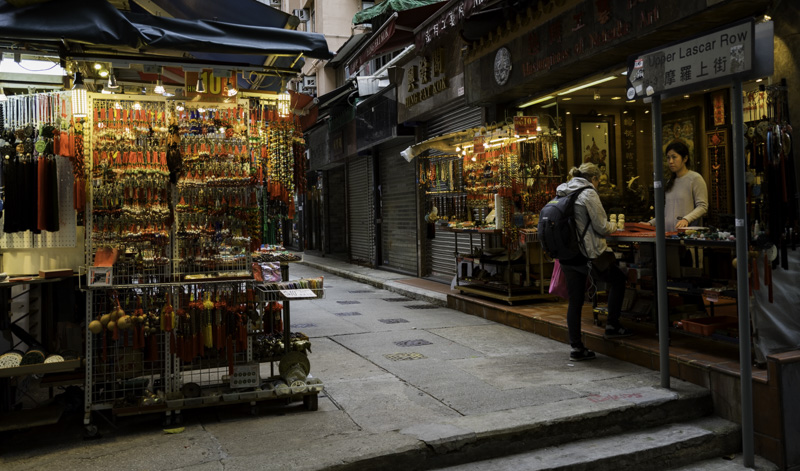
Back on the Island, this market is located on Lascar Row in Sheung Wan, Cat. It’s not really an antique market, but is more of a flea market selling curios, and other odds and ends, including souvenirs geared towards tourists. The place has quirky trinkets often based on historical aspects of China – terra-cotta figures, scrolls, statues of Mao. The market is not open on Sundays.
8. Man Ho Temple
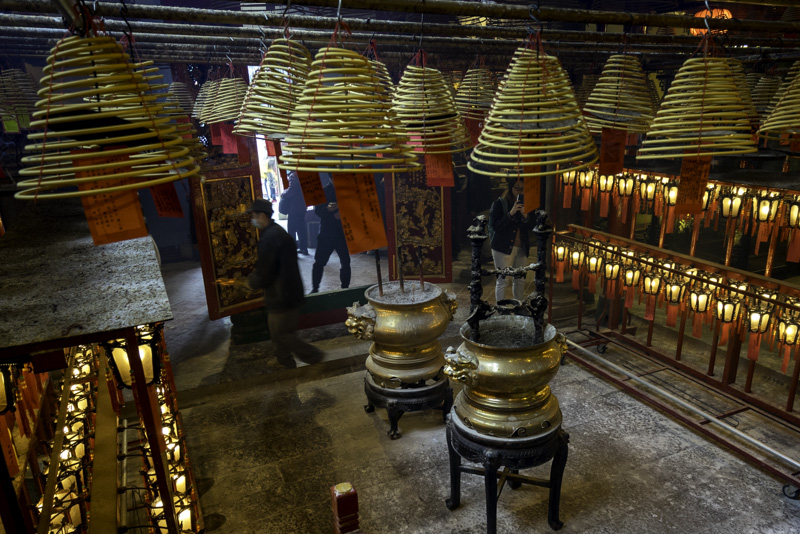
If you are at the Cat Street Market, head on over to the Man Ho Temple on Hollywood Street, literally a stones throw from the Cat Street Market.
This temple is a place of worship to the god of “civil” or man (Man) and the god of war (Mo), who were worshipped by students looking to succeed in the civil examinations of Imperial China. Built in 1847, this remains the largest Man Mo temple in Hong Kong (but the visit is not that time-consuming). This is a great place to get a feel for the spiritual heritage of the Cantonese / Chinese culture of the area.
Just further up the street is a fantastic restaurant called Butcher and Meat Specialist.
9. Shop at Causeway Bay -Fifth Avenue equivalent.
Causeway Bay is Hong Kong’s answer to 5th Avenue. It is the center of shopping. Actually, Hong Kong has no shortage of shopping opportunities. One is almost overwhelmed with the high-end brands that are available. In fact, though designer brands knockoffs are available in mainland China, there are stores in Hong Kong selling the original products, attracting so many mainland shoppers that there are long queues outside the stores with managed entry.
For a guide on shopping in Causeway Bay check out this website
10. Soho
“SoHo” is short for “South of Hollywood Road.” After hours this area is where many of the Hong Kong young executives hang out after work. It is the stylish neighborhood in Hong Kong where you will find trendy bars and restaurants. One of the other cool things you can experience is taking the unique escalator system, called the Mid-Levels Escalator from. To get to Queen’s Road, Central get off at Staunton Street or Elgin Street.
Although you can wander around and find a restaurant you like, here are a couple of suggestions from a Hong Kong local resident. Although not strictly speaking in Soho (more Central), they are top end restaurants and you can’t go wrong selecting one of them if you only have one day in Hong Kong.
Mott 32 a modern approach to Chinese cooking or Stockton, an amazing speakeasy bar with an interesting menu.
Bonus Activity: Michelin Star Dim Sum at Great Prices
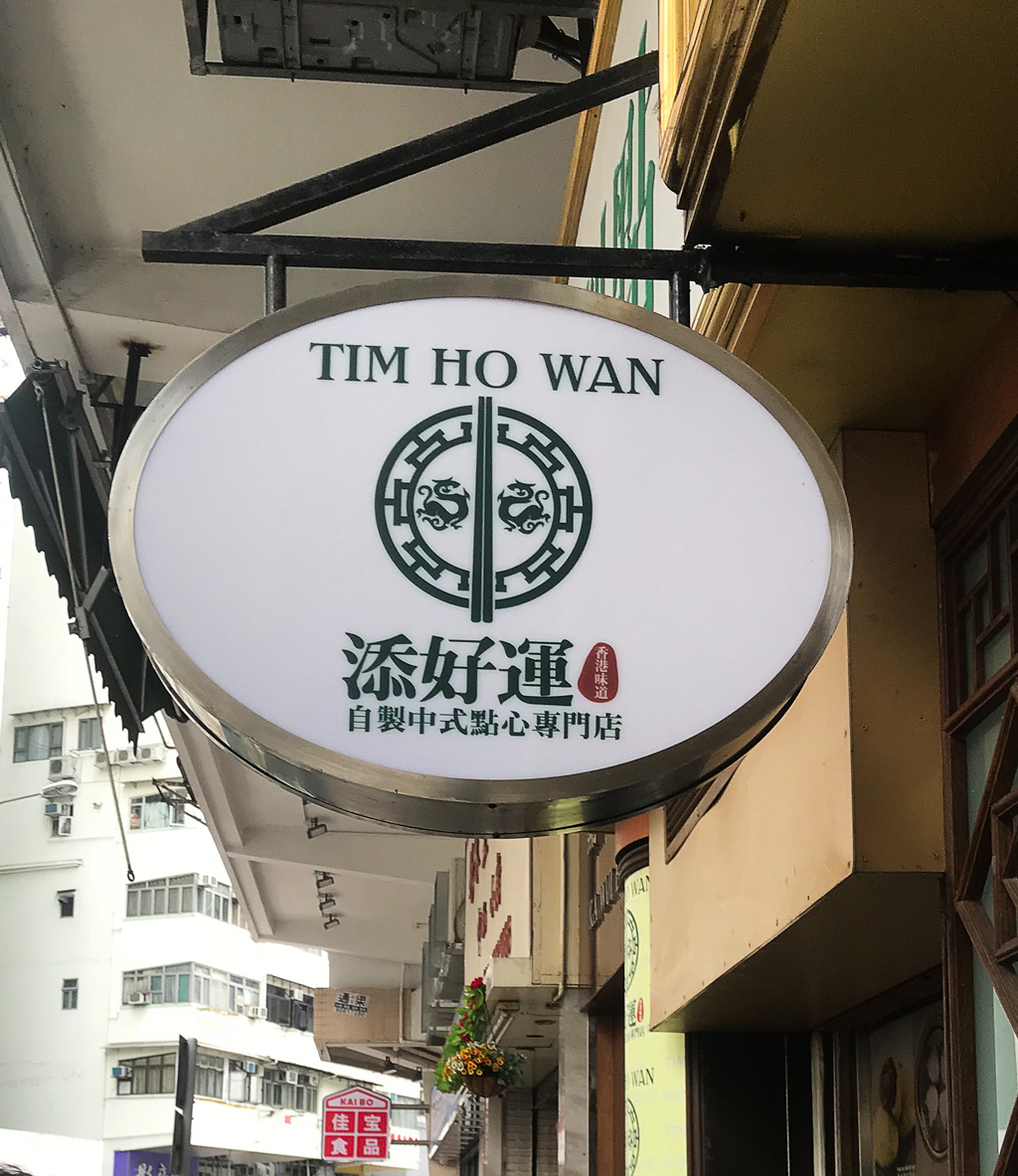
A must stop in Hong Kong is the Tim Ho Wan restaurant at 9-11 Fuk Wing St, Sham Shui Po. This is a Michelin Star restaurant that serves some of the best Dim Sum at ridiculously cheap prices. The place, as you would expect, is packed. You wait outside for your turn. I was on my own, so they placed me at the same table as a Chinese family, who spoke no English. All part of the cultural experience!
There is nothing genteel about the service. In typically clipped Cantonese terms, I was summoned to the table with hand gestures and blunt pointing. The total English spoken by the hostess was “sit”, pointing to the spare place at the table occupied by the Chinese family.
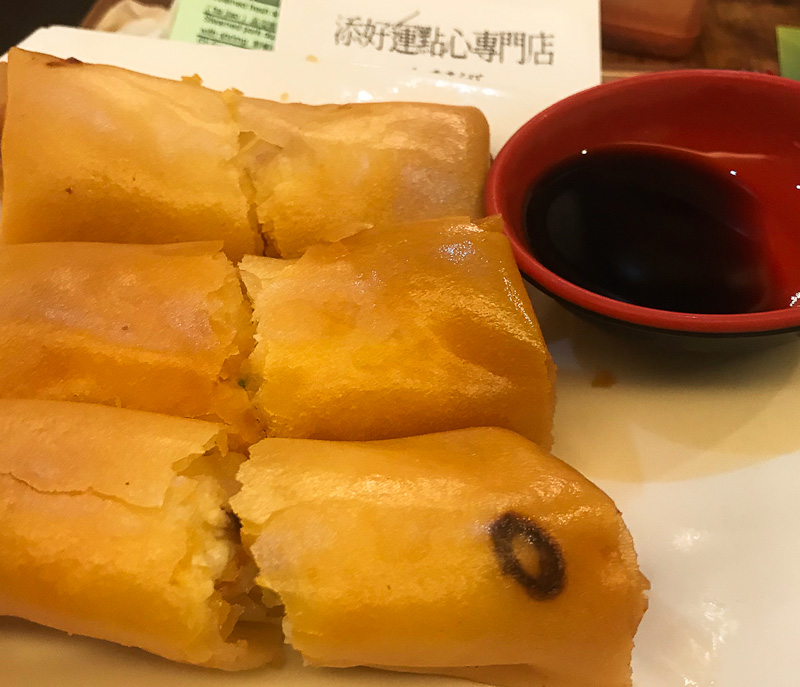
Fortunately, the menu had some English and you check a box for the items you want. The food was good, but not being a Dim Sum expert I really couldn’t tell why it got those stars.
If you are new to Dim Sum and want to understand more about it check out this website.
Hong Kong Transport System
Hong Kong has an excellent transport system that should cover all your needs. There are several basic transport options you have:
- Airport Express
- MTR (metro)
- Taxis
- Star Ferry
- Uber
Airport Express
The airport express is the fastest way to get into town from the airport. It stops in 3 places. Tsing Yi (popular stop for residents), Kowloon and Hong Kong Island. From there you can catch an MTR or taxi to your hotel.
Depending on the time of day and the number of people in your party, it might be cheaper to take a taxi from the airport.
Adult Tourist Day Pass and Child Tourist Day Pass2
Purchase a $65 Adult Tourist Day Pass or $30 Child Tourist Day Pass to enjoy any one day of unlimited travel on the MTR4 to experience Hong Kong. The ticket is valid for one month from the date of issue. You will find a place to buy them in a hallway as you come out of baggage claim at the airport.
Airport Express Travel Pass
Purchase a $250 or $350 Airport Express Travel Pass (both include a refundable deposit of $50) to enjoy one or two single journeys on the Airport Express, as well as three consecutive days of unlimited travel on the MTR, the Light Rail and MTR Bus (which operates in the northwest New Territories). This can also be bought at the airport.
You can add money on this card to act like the Octopus card – see below. In its basic form, this card does not give you access to buses and the Star Ferry, unless you add money to it.
MTR
The MTR consists of eleven rail lines, including Island, South Island, Tsuen Wan, Kwun Tong, Tseung Kwan O, Tung Chung, West Rail, East Rail, Ma On Shan, Disneyland Resort and the Airport Express.
There are various different options for paying on the MTR. As mentioned above you can buy a travel card. You could pay for individual rides – available on many ticket machines in the stations. Or you can buy an Octopus Card that we have detailed below.
Taxis
The taxi system in Hong Kong is outstanding. It is highly regulated so you should not worry about being ripped off. The following are a few pointers about the way they operate.
Taxis can be hailed along the street but there are areas where they are not allowed to stop. If you see taxis ignoring you, it could be because you are in a non-stop zone. There are plenty of taxi stands and queues (especially at hotels).
Strangely, some taxi drivers don’t speak good English. It is advisable to have a printed address that you can show the driver (ideally with Chinese characters).
Seat belts are required by law. So if your driver grunts at you and makes a motion like put your seatbelt on, he is not being rude.
Taxis in Hong Kong are distinguished by their color – red, green and blue.
Red taxis operate throughout most of Hong Kong, except for Tung Chung Road on Lantau Island and on the entire south side of Lantau Island.
Green taxis only service the New Territories.
Blue taxis only operate on Lantau Island.
While some taxis may take a credit card or Octopus card, don’t bank on it. Always have cash.
Star Ferry
Ferries between Hong Kong Island and Kowloon
The Star Ferry transports passengers between Central as well as Wan Chai on Hong Kong Island and Tsim Sha Tsui, Kowloon.
There are also ferries between Hong Kong Island and Outlying Islands that operate from the Central Ferry Piers on Hong Kong Island to the main Outlying Islands of Peng Chau, Cheung Chau, Lamma Island, and Lantau Island, including Discovery Bay. Two types of ferries operate along most routes: standard ferries and the slightly more expensive fast ferries.
Uber
Uber operates well in Hong Kong and may be cheaper than a standard taxi.
Octopus Card
This is an extremely useful electronic card that can be used for most public transport and purchases in convenience stores, fast food shops, supermarkets, vending machines and more. Simply place the Octopus card over a reader and the payment amount will be automatically deducted from the stored value.
Various types of Octopus cards are available. The best types for visitors include Sold Tourist Octopus card at HK$39 and On-loan Octopus card with a refundable deposit of HK$50. The Sold Tourist Octopus card has an iconic Hong Kong design, making it an ideal souvenir that can be used again when you come back. A refund handling fee will be charged if you return the On-loan Octopus less than 90 days from the date of issue.
If you spend any length of time in Hong Kong, this is a must-have card.
Done any of these things? Have any other suggestions on how to spend 24 hours in Hong Kong? Please leave us a comment!
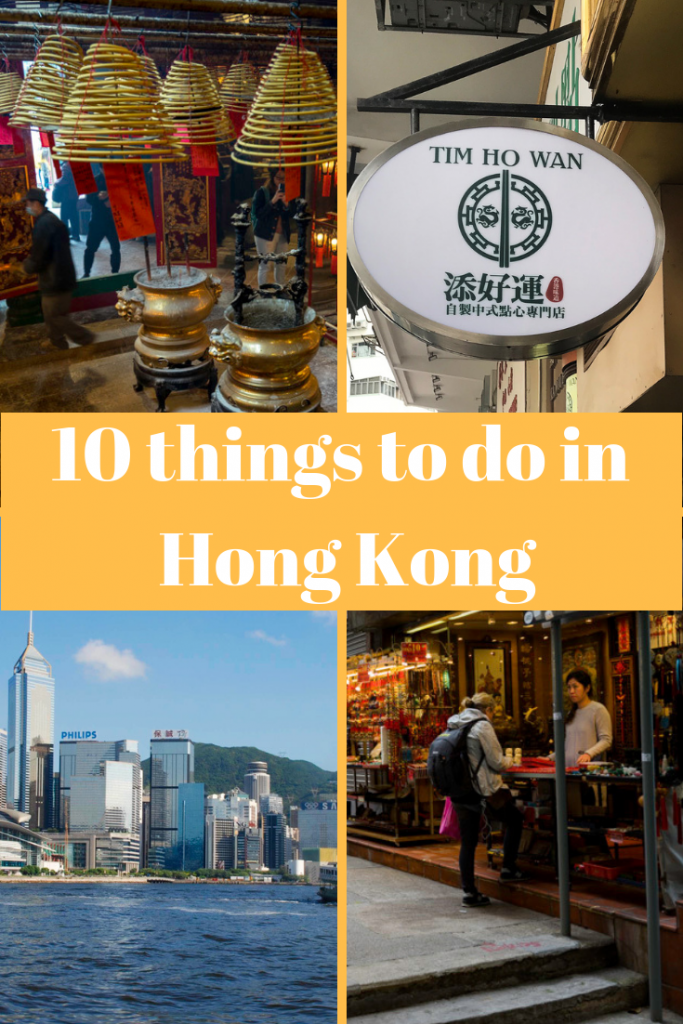
Related
Piers A van der Merwe
To find out more, including how to control cookies, see here: Cookie Policy

